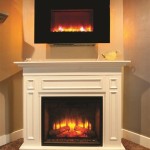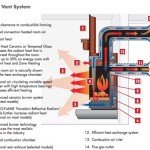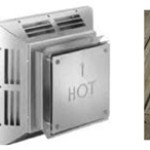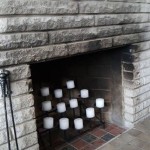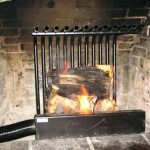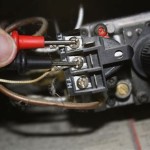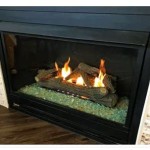Understanding Direct Vent Gas Fireplace Code Requirements
Direct vent gas fireplaces, with their efficient heating capabilities and aesthetic appeal, have become increasingly popular in homes. However, it's crucial to understand the building codes governing their installation to ensure safety and compliance. This article delves into the essential code requirements for installing a direct vent gas fireplace, providing valuable insights for homeowners and professionals.
1. Venting System Requirements
The heart of a direct vent gas fireplace is its venting system, which safely conveys combustion byproducts outside. Codes mandate specific requirements for the vent pipe and its installation. The pipe must be made of materials approved for high temperatures and corrosion resistance, typically stainless steel or aluminum. The vent pipe diameter should be determined by the fireplace's BTU output and the manufacturer's specifications, ensuring adequate airflow.
Furthermore, the vent pipe must be installed vertically, with a minimum slope of 1/4-inch per foot to prevent condensation buildup. It is essential to maintain proper clearances between the vent pipe and combustible materials, as outlined in the code and the fireplace manufacturer's instructions. This clearance ensures the vent pipe doesn't overheat nearby materials and poses a fire hazard.
The vent pipe's termination outside the home is equally important. It should extend at least 12 inches above the roofline and be located a minimum distance from any combustible materials. The vent pipe termination should also include a rain cap to prevent water from entering the system, potentially causing corrosion or malfunctions.
2. Fireplace Location and Clearance
The location of a direct vent gas fireplace within a home isn't arbitrary. Building codes specify minimum clearances between the fireplace and combustible materials, such as walls, floors, and furniture. These clearances are primarily designed to prevent heat transfer and potential fire hazards.
The required clearances vary depending on the fireplace's BTU output and the construction materials surrounding it. Codes typically outline minimum clearances for the front, sides, and rear of the fireplace. The fireplace manufacturer's installation guide provides detailed instructions on specific requirements for the model. It is essential to consult both the code and the manufacturer's guide for accurate clearance measurements.
Additionally, the fireplace's location must allow for proper air intake and exhaust. Codes mandate that the fireplace be situated to ensure adequate airflow for combustion. The fireplace's air intake should not be obstructed by furniture or other objects. This prevents the fireplace from drawing in insufficient air, leading to incomplete combustion and potentially hazardous conditions.
3. Gas Line Installation and Safety
The gas line supplying fuel to the direct vent gas fireplace must be installed according to code requirements. This includes using appropriately sized gas piping, employing proper fittings and valves, and ensuring proper pressure regulation. The gas line must be leak-tested before the fireplace is lit to ensure safe operation.
The gas line should be installed by a qualified and licensed gas fitter. They can verify the gas pressure, properly size the gas piping, and ensure compliance with the local building codes. Using a qualified professional is crucial for safety and to prevent potential gas leaks and hazards.
The fireplace's gas control valve should be accessible for easy operation and maintenance. This valve is typically located near the fireplace and allows for shutting off the gas supply to the appliance. The valve should be in a readily accessible position, allowing quick and safe shutoff in emergency situations.
In conclusion, understanding and adhering to the code requirements for installing direct vent gas fireplaces is paramount for safety and compliance. These codes are designed to ensure efficient operation, minimize fire hazards, and prevent potential health risks. Consulting with a qualified professional during the installation process is highly recommended to ensure proper installation and compliance with local codes.

Benefits Of Direct Vent Fireplaces

Gas Fireplaces Direct Vent Vs Free Fine Homebuilding

2024 International Fuel Gas Code Ifgc Chapter 5 Chimneys And Vents 503 8 Venting System Terminal Clearances
.aspx?strip=all)
Benefits Of Direct Vent Fireplaces Regency Fireplace S
Venting What Type Do You Need Heatilator

Do Gas Fireplaces Need A Chimney Fireplace Tips

Gas Fireplace Hearth Requirements With Real Examples

Vkc 58 Direct Vent Corner Kit Vkc58 J2991

Freestanding High Efficiency Direct Vent Gas Fireplaces Inserts Stoves Godby Hearth And Home

Gas Fireplace Hearth Requirements With Real Examples
Related Posts

